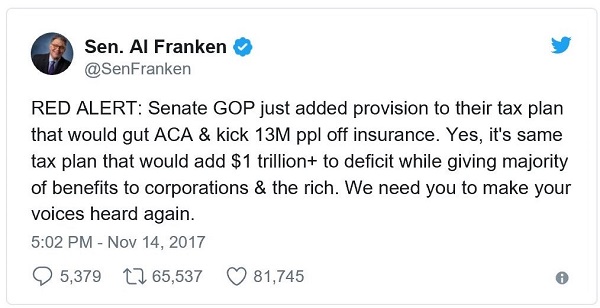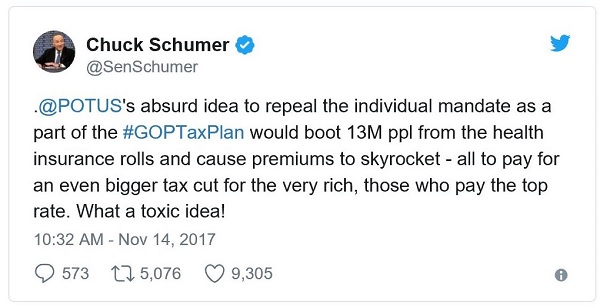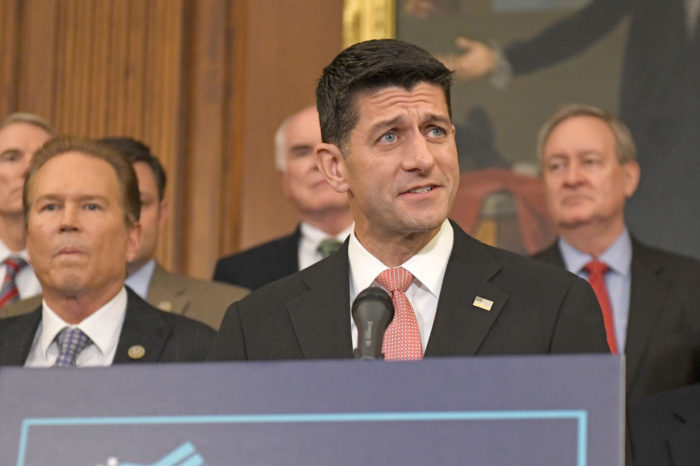Conservation or Control?
Both the United States and the State of Florida were founded on the recognition, and consistent defense of, the concept of private property rights. It was no theoretical warning given by Founding Father Arthur Lee of Virginia when he said,
The right of property is the guardian of every other right, and to deprive a people of this, is in fact to deprive them of their liberty.
The ideas of self-determination, individualism, and self-reliance fostered and demanded by this principle have shaped the settlement and prosperity of our country and state. From such beginnings until today, these values remain an integral part of our culture and way of life.
However, across the country, government continues to pursue policies that erode this fundamental right. Among the most serious of these encroachments is the aggressive and continued acquisition and regulatory control of land.
A Policy of Failure in the West
Government land acquisition is most noticeable in states west of the Mississippi River, where approximately 50 percent of all land is owned by the federal government. In states such as Utah, Idaho, Arkansas and, Nevada, federal ownership exceeds 70 percent.[1] For decades, western states have seen firsthand how this disproportionate amount of federal land ownership deprives them and their citizens of economic opportunities. This challenge is only growing worse as environmental interests and centralized government work to lock up the land and its resources.
A consequence of such a federal policy is many local governments in Western states have significantly less private property available to tax than their eastern counterparts. Every acre taken over by the federal government is an acre off the tax rolls. Less tax revenue means budget constraints on vital services like police protection, construction and maintenance of roads and bridges, firefighting, search and rescue operations and public education. Rather than return property to local ownership and control, the federal government has chosen to offset the loss of property taxes by establishing the payment in lieu of taxes (PILT) program.[2] States in the West must increasingly rely on those states in the East to fund land management and government services through subsidies.
In the West, excessive federal ownership and control of land prevents state and private interests from best-use and management of property. As a result, trillions of dollars of potential revenue that could go towards strengthening economies, funding land management, and meeting needs of citizens is left untapped.
A Lesson for Florida
In Florida, policymakers should be vigilant to avoid the plight of states west of the Mississippi. While federal ownership is not as acutely felt in Florida as in the West (although Florida helps pay for subsidies to the west), state government ownership and control is growing and potentially could have a significant impact.
According to a February 2017 summary published by the Florida Natural Areas Inventory, Florida contains 34.7 million non-submerged acres. Of that total, more than 10.2 million acres (nearly 30 percent) are held in conservation. Breaking down further, state government owns and manages 14.1 percent; the federal government owns and manages 11.6 percent; and, local governments account for 1.4 percent. This does not begin to consider the acreage used for state and local government office buildings, agency operations, maintenance, etc. It also does not include acreage used to house state educational facilities.
The most aggressive government acquisition of property has come in the area of conservation. The Florida Legislature passed several laws to expand conservation in the 1980’s and 1990’s. However, it was during the years 1999 to 2015 when the acquisition of conservation land intensified. During this period, two programs were passed by the Florida Legislature that increased the amount of state-owned conservation lands by 30 percent[4].
Acquisition is Costly
From 1999 to 2005, the Preservation 2000 program acquired land for conservation. Since 2001, the Florida Forever program has acquired conservation lands and continues in effect today. As of June 30, 2015, via these two programs, the state has purchased approximately 2.5 million acres at a direct cost of $6.2 million to Florida’s taxpayers.[5] This direct cost does not account for the revenues lost from the property being removed from the tax rolls.
During the years of the Great Recession, conservation land purchases by the state were diminished due to decreased state revenues. However, as the economy has stabilized and rising revenue projections have returned, calls for land purchases and conservation easements (privately-owned lands dedicated in perpetuity for conservation in exchange for tax breaks) are increasing in volume.
In 2014, Florida voters passed the Florida Water and Land Conservation Amendment. This state constitutional amendment designates one-third of real estate documentary stamp revenues toward conservation land acquisition, maintenance of government owned property, renovation of historical sites, and restoration of the environment, especially the Everglades, etc. To some, this presented an opportunity to balance the aggressive acquisition of land with funding enabling the state to better steward its government-owned land and water. But to others, it was seen and promoted as an open checkbook for aggressive (and unnecessary) land acquisition.
Maintenance is Costly (and Recurring)
Easily overlooked by those advocating for more land purchases is the cost of property maintenance. Maintenance is critical to clear brush for preventing wildfires, fighting off invasive species and plants, and protecting the overall land aesthetic. Unlike the one-time cost of property purchases, maintenance is an on-going, recurring expenditure. It requires employees (salaries, insurance and pensions), facilities, equipment, fuel, and other expenses.
The 2016 Annual Report of the Land Management Uniform Accounting Council [6] states that in FY 2015-2016, state agencies in Florida spent more than $173 million to manage 3.4 million acres of conservation lands. Accounting for tourist revenues of approximately $79 million, the net cost to taxpayers for maintenance of conservation lands was $94.6 million or $28.23 per acre [7]. Such maintenance expenditures are sure to increase and, again, will be incurred every year.
Based on the 2016 Annual Report and assuming an acquisition cost of $2,500 per acre (the average price per acre in both the Florida Forever and Preservation 2000 programs [8]), the acquisition of 20,000 acres for conservation would incur a one-time cost of $50 million. In addition to this, an annual maintenance cost of approximately $565,000 would need to be added to an already stretched state budget.
Debt Service is Costly (and Recurring)
Another often overlooked stress on the state budget is the cost of debt service. A 2017 report from the Office of Economic and Demographic Research reveals, “To date, the state has issued approximately $2.0 billion of Florida Forever bonds. The most recent year that new bonds were authorized was Fiscal Year 2008-09. As of September 2016, the aggregate principal amount of outstanding bonds is $1.0 billion, with debt service of approximately $145.2 million due in Fiscal Year 2016-2017. If no new bonds are sold, the estimated debt service is expected to decline each year through Fiscal Year 2028-29, at which time the Florida Forever bonds would be retired.”
Local Loss is Costly
In addition to the state budget, financial stress is also felt at the local level. County and municipal budgets are funded primarily from property taxes. Property owners’ taxes fund local education, road maintenance, law enforcement, social workers, growth management, environmental protection, and flood control, just to name a few spending categories.
As government purchases take property off the tax rolls, less revenue is available to provide necessary services. This puts local governments in the difficult position to either reduce services or raise taxes on the remaining taxable private properties. Increasing government land ownership inevitably creates a negative ripple effect impacting all levels of the public sector.
The inherent tension is a result of an economic concept called “opportunity cost.” State revenues are fixed by tax structure. Every dollar we spend on one service is a dollar not being used to support another service. We elect policymakers to make informed decisions on our behalf. Often, around election cycles, special interest groups will assert themselves for greater levels of taxpayer support. Government’s property acquisitions, maintenance, and debt service also compete for these funds.
Today, the impact of government land ownership is felt most acutely in the western states massive federal land ownership and its financial strains like states and their citizens in the west. Florida policymakers should take heed and work to curb the never-satisfied desire to control more and more land. Floridians already help pay for the subsidies western states receive due to massive government ownership and the costs incurred.
Florida’s policymakers should consider how much government owned conservation land we truly need and how we plan to afford to keep it.
Author
DIRECTOR OF THE CENTER FOR PROPERTY RIGHTS
- http://propertyrightsresearch.org/2004/articles6/state_by_state_government_land_o.htm
- https://www.doi.gov/pilt/
- http://fnai.org/PDF/Maacres_201702_FCL_plus_LTF.pdf
- Florida Department of Environmental Protection, Statistical Abstract, Land Conservation
- Ibid
- http://www.dep.state.fl.us/lands/ARC/2016_LMUAC_Annual.pdf
- Ibid
- Florida Department of Environmental Protection, Statistical Abstract, Land Conservation
- http://edr.state.fl.us/Content/special-research-projects/natural%20resources/LandandWaterAnnual%20Assessment_2017Edition.pdf





























It’s not exactly “Man Bites Dog,” but “Congress Gets Defense Spending Right” is almost as surprising a headline.
For too long now, we’ve been cutting corners when it comes to the military. Years of underfunding have given us a weakened force that, despite the hard work of our brave troops, is ill-equipped to handle the missions we keep throwing at it.
Think the recent spate of ship collisions is a coincidence? Hardly. They’re a red flag—a warning sign we ignore at our peril. That’s what happens when you shortchange our armed forces, and fail to ensure that they have the best training and the best equipment possible.
So when House and Senate leaders released their proposal for a defense spending authorization for 2018, and it not only met but exceeded the amount that Heritage Foundation experts had been recommending, it marked a rare piece of good news from Capitol Hill.
A base funding amount of $634 billion sounds like a lot of money—and it is. But it’s money well spent. Indeed, notes defense expert Thomas Spoehr, it “will go a long way toward beginning the rebuilding of America’s deteriorated military.”
It will do that in large measure by providing increased numbers of aircraft, ships, and ground equipment—all of which, thanks to years of underfunding, is desperately needed.
House and Senate leaders are also calling for increases in the size of the Army, Air Force, Navy, and Marine Corps. Good thing, too. Each branch needs additional personnel and are at historic lows in terms of manpower.
How low? Consider what the Air Force recently did. It’s facing a shortage of fighter pilots. By year’s end, defense expert John Venable writes in the National Interest, “the service is projected to have fewer than 2,643 of the 3,643 active-duty fighter pilots it needs to execute its mission.”
So President Donald Trump issued an executive order authorizing the secretary of defense to recall up to 1,000 retired Air Force pilots to make up for the shortfall. A good idea, but this is the sort of stopgap measure that the military has been forced to rely on for too long.
Sooner rather than later, Band-Aids won’t work.
In fact, such short-term solutions, however creative, can almost be dangerous. They help the various branches accomplish the mission at hand, and that’s certainly a good thing. But they can mask the serious problems underneath.
It’s like putting duct tape on a crack in a door. It covers up the crack, yes, and it makes things seem fine—for a while. But a problem that’s out of sight doesn’t magically go away. It continues to fester until some emergency down the road forces you to fix it properly.
But by then, it’s metastasized and become more expensive to fix.
By the same token, the underfunding problem that plagues our overworked, overstressed military should have been addressed long ago. But there are no time machines handy, so the only thing we can do is to start fixing it right now.
That’s what the congressional defense authorization bill does. It takes our collective head out of the sand and enables us to get to work.
Mind you, this is just the first step. And it’s not even a step per se—it’s a decision to take that step. But the mere fact that congressional leaders are owning up to the problem and vowing to do something about it is promising.
There is much to follow through on, and Heritage’s research papers have detailed recommendations for each branch. And if our elected leaders need some motivation to get it right, Heritage’s 2018 Index of U.S. Military Strength also outlines the growing threats around the globe.
There are many things we can afford to do cheaply. Defense isn’t one of them. Let’s make sure we get this right.
Originally published by The Washington Times.
COMMENTARY BY
Ed Feulner
Edwin J. Feulner’s 36 years of leadership as president of The Heritage Foundation transformed the think tank from a small policy shop into America’s powerhouse of conservative ideas. Read his research. Twitter: @EdFeulner.